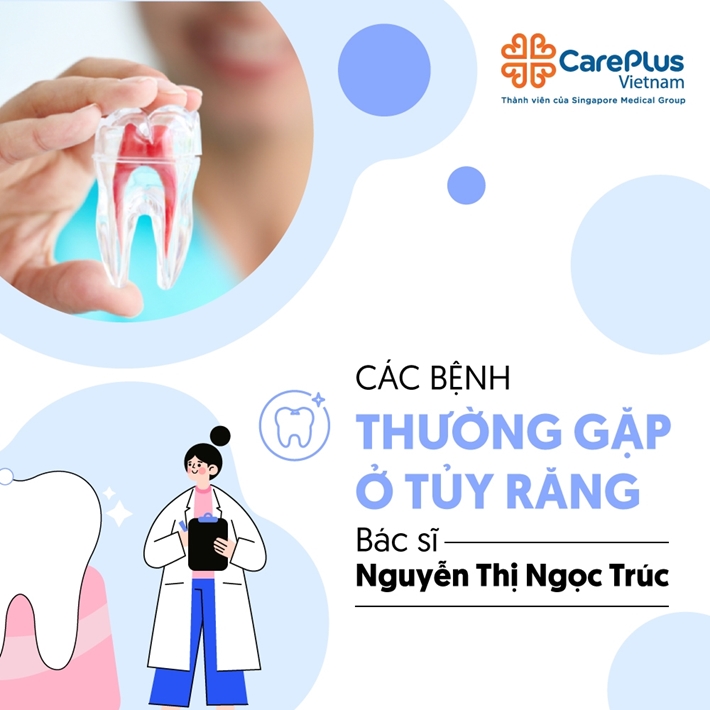Common disease of the dental purpose
Understanding the causes as well as common diseases related to the tooth pulp will help the prevention and treatment process take place more effectively.

8/22/2022 9:40:25 AM
1. Dental pulp and causes of tooth pulp disease
The pulp is a special connective tissue containing many nerves and blood vessels located in a cavity between the dentin. The pulp is present in both the crown and root (called pulp chamber and canal), which is surrounded by dentin and enamel. Root canals are very small and thin tissue fibers that branch from the pulp chamber above the crown down to the root apex.
Pathology related to dental pulp is a fairly common condition, often stemming from complications of dental caries, causing the histological components of the pulp to become infected, even necrotic. Long-term untreated tooth decay is a favorable condition for bacteria to survive and penetrate the tooth with an open pulp to cause disease.
2. Common diseases of tooth pulp:
- Myelitis is reversible
In reversible pulpitis, pulp vitality can be maintained if the tooth is treated, usually by removal of carious tissue, and then restored. Depending on the extent if the condition of tooth decay is not detected and treated promptly. Patients will have a feeling that their teeth are sensitive when they encounter stimuli such as cold or hot, sour food, and the sensation of tooth sensitivity does not last long. These manifestations will disappear as soon as the stimulus is removed.
- Irreversible myelitis:
Irreversible pulpitis includes both painless or painful forms. In the painful form of irreversible pulpitis, the patient may experience typical pulpal pain such as:
- Spontaneous pain:
- Pain spreading to half face and migraine on the same side.
- Pain in the area, can not determine the exact position of the tooth that hurts
The pain can be for just a few minutes or it can last for hours.
- Pain worsens when changing positions or hot/cold stimuli.
- For the painless form of irreversible pulpitis, it can be detected through clinical examination when a tooth with an open pulp has yellow speckling, dark red mass or cavity.
- Chronic myelitis:
Chronic pulpitis is a chronic infection of the tooth pulp. Most of these cases lead to pulp necrosis (marrow death), the marrow is completely irreversible as in the acute stage.
- Chronic pulpitis often progresses from acute pulpitis without timely examination and treatment.
In fact, chronic pulpitis does not cause typical symptoms and is difficult to recognize. At this time, the pulp is severely infected, so it reduces its ability to perceive pain and sensitivity signals.
Therefore, the level of pain and accompanying symptoms are usually milder than the acute and subacute stages. This makes the patient have a subjective attitude, does not conduct early treatment, causing the teeth to be damaged, damaged and even broken.
- Necrosis of tooth pulp:
Pulp necrosis is a late stage of irreversible pulpitis, the pulp is unresponsive to hot or cold stimuli, but usually responds to percussion testing, requiring root canal therapy or tooth extraction.
- Most of the remaining cases do not have any pain symptoms, the pain only appears when the inflammation and necrosis spread to the root of the tooth.
- In the initial stage, diseases in the pulp may not affect the patient's daily activities much. However, if not detected and treated promptly, the disease can progress to more severe chronic pulpitis or pulp necrosis.
- The death of a tooth with necrotic pulp that accumulates at the root of the tooth or spreads to adjacent teeth can lead to serious complications.